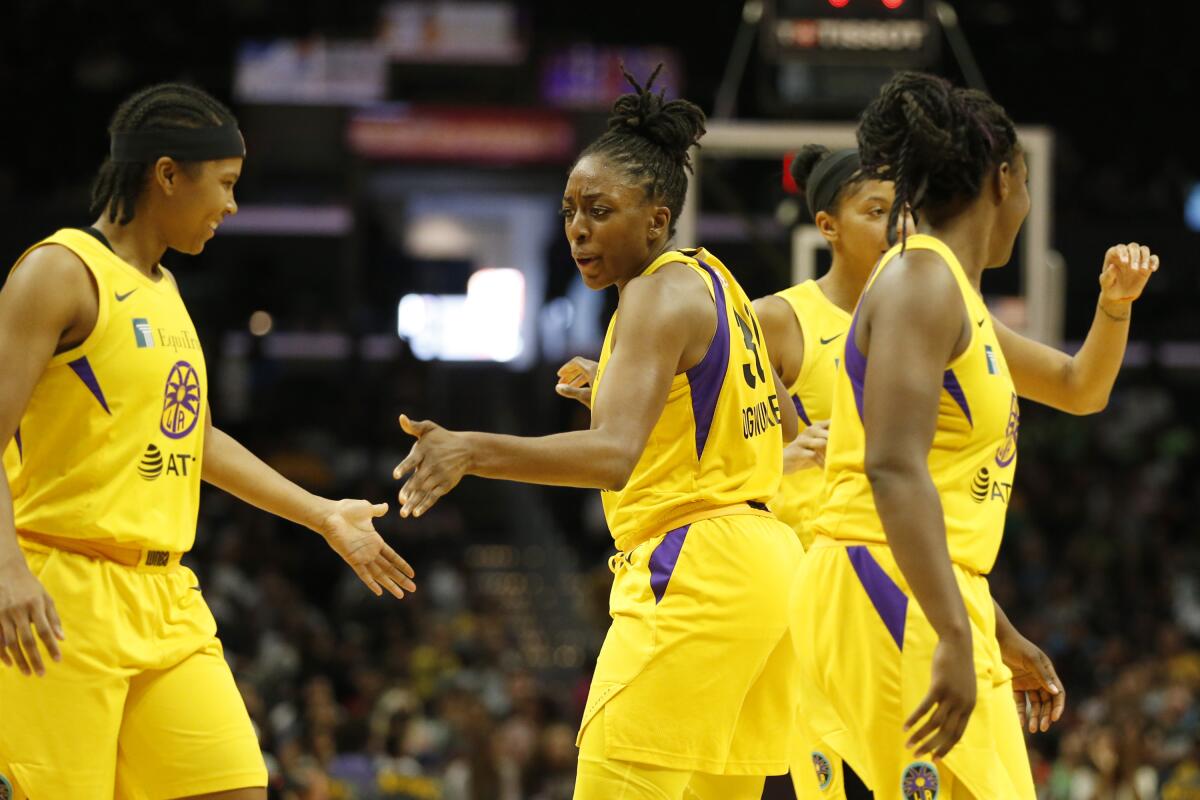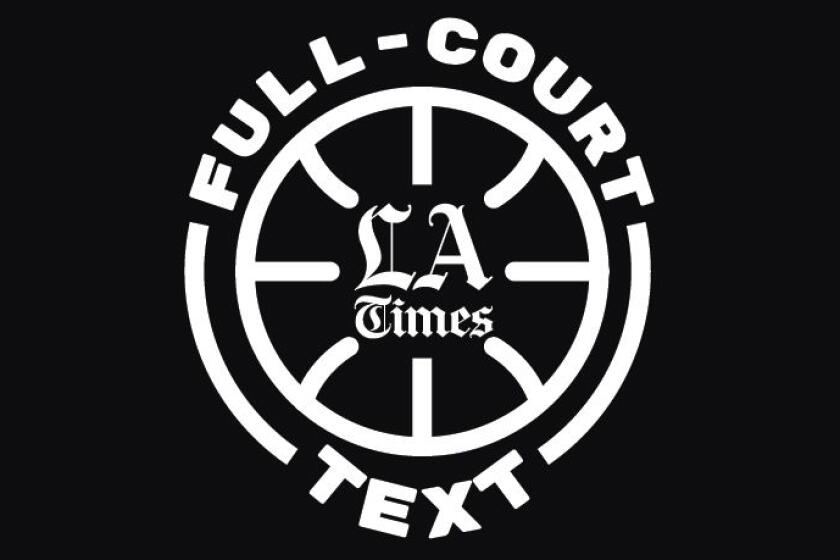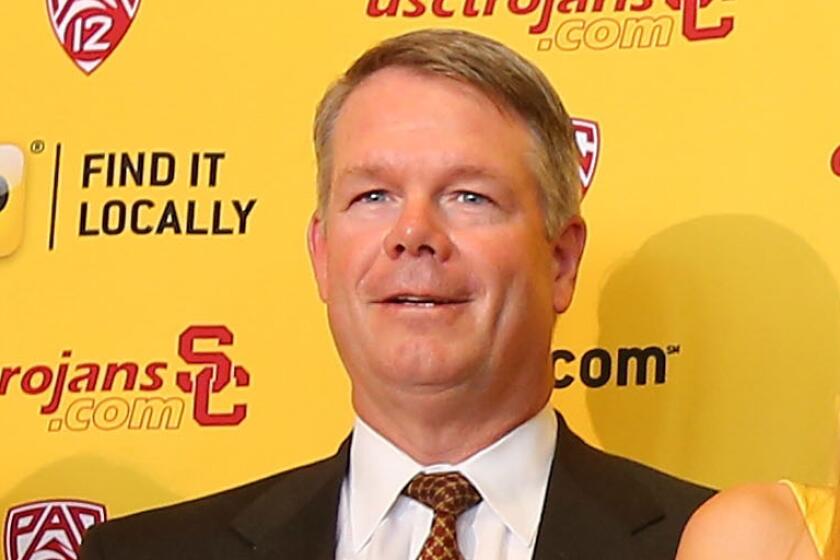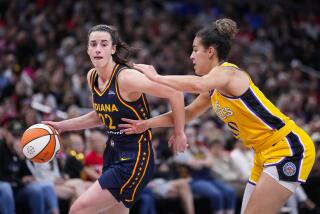News Analysis: WNBA announces landmark deal with its players’ union

- Share via
For every dollar that corporate America spends on sports sponsorship, less than a penny goes to women’s professional sports. The WNBA gets a fraction of that fraction.
The WNBA and its players’ union announced an eight-year collective bargaining agreement Tuesday, with increases in player salaries and landmark benefits for motherhood and family planning.
As the WNBA enters its 24th season, the success of the new agreement and vitality of the WNBA depend on persuading companies to invest in the league at a level they have declined to do over the previous quarter-century.
“We are betting on women in a big way here,” WNBA Commissioner Cathy Engelbert said on a conference call.
The top player salary in the league jumps from $117,500 to $215,000, with each team’s salaries capped at $1.3 million. The league said elite players would have the chance to earn more than $500,000 annually, with the balance coming from award bonuses, prize pools from exhibition tournaments, and team and league marketing agreements.
The league said the average annual player compensation — salary, bonuses, exhibition winnings and marketing revenues — would approach $130,000.
Players also would get full salary on maternity leave, an annual child-care stipend of $5,000 and reimbursement of up to $60,000 in family-planning expenses, such as adoption, surrogacy, egg freezing and in vitro fertilization.
“We really hope that we can set a precedent for women in the workplace,” said union President Nneka Ogwumike, an All-WNBA forward for the Sparks.
The legacy of the agreement should be determined not by individual salaries but by what Engelbert called “collaborative marketing.” The players opted out of the previous labor agreement in part because they were tired of having to play overseas to earn top dollar and frustrated that they were not marketed well enough to make top dollar in the United States.
Three of USC’s most senior athletic department officials, including Steve Lopes, the CFO and COO, will not continue in their roles.
Under the new agreement, the league and its players pledge to work jointly on year-round marketing, which could require some players to skip making money abroad in the hope of making more money here.
“We understand that we have to change this business model,” Ogwumike said. “If that means us being around more frequently, for longer and more often, we were OK with that.”
The league said it would share revenue with the players on a 50-50 basis once it hit targets for broadcasting, licensing and sponsorships, but the league did not say what those targets were or how many more millions would need to be raised to hit them.
In a conference call that lasted for an hour, Engelbert was short on specifics and long on marketing jargon. She spoke of starting “a new basketball event that fuses culture, music and fashion.” She talked about creating value, launching assets and driving revenue.
Engelbert, who became commissioner last July, will be trying to persuade corporate America to lean in to the WNBA at a time when fans are not, at least based on attendance. The average crowd for a WNBA game last season was a record-low 6,535, although the Sparks led the league at 11,307.
The average crowd for a WNBA game last topped 7,000 in 2017, last topped 8,000 in 2009 and last topped 9,000 in 2002. The league set its record high for average attendance in its second season, attracting 10,869 fans per game in 1998.
Still, the WNBA has lasted longer than any other women’s professional league in the country. Engelbert sees much to sell in 2020, with events to celebrate the league’s 25th anniversary, and to capitalize on the exposure of women’s basketball in the Olympics with the United States favored to win another gold medal.
With women increasingly filling executive positions as companies decide how to spend their advertising dollars, Engelbert is optimistic that the league can attract the corporate dollars necessary to fuel the growth of the league.
“We’ve got an enormous opportunity,” she said. “I believe, if we can’t do it, no one can.”

Sign up for Full-Court Text with NBA reporter Dan Woike
Receive SMS texts about the Lakers, Clippers and the rest of the NBA and text back with your questions.
More to Read
Go beyond the scoreboard
Get the latest on L.A.'s teams in the daily Sports Report newsletter.
You may occasionally receive promotional content from the Los Angeles Times.












